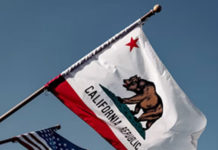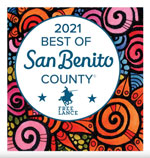Eleven years before Prop. 13, the landmark 1976 ballot
initiative that capped property tax assessments and saved
homeowners from being taxed out of their homes, there was the
Williamson Act
– which did essentially the same thing for farmers.
Hollister – Eleven years before Prop. 13, the landmark 1976 ballot initiative that capped property tax assessments and saved homeowners from being taxed out of their homes, there was the Williamson Act – which did essentially the same thing for farmers.
Now 40 years old, at the time Williamson was a revolutionary tax reform. Its purpose was to ease the pressures of urban growth on agricultural land by providing a tax incentive for farmers to remain in agriculture.
Land enrolled in a Williamson Act contract is taxed at a rate based on the actual agricultural productivity of the land instead of its unrestricted market value. In return the landowner commits to restricting the use of his or her land to agriculture and open space for at least 10 years.
According to the California Department of Conservation, the program is estimated to save agricultural landowners from 20 to 99 percent in annual property tax liability.
The San Benito Cattle Company has had land enrolled in the program since 1965. President Mitt French said without the tax breaks provided for in the Williamson Act many farmers would have had to sell pieces of their property. These sales would have dramatically altered the landscaped of Hollister and San Benito County.
“It’s a great benefit to hold ranch property together,” French said. “Property taxes would be unbearable otherwise, not many people would be able to afford it.”
Greg Renz, owner of Agco Hay Company, doesn’t own any land that is enrolled in the program, but leases some land for cattle ranching that is enrolled. Even though he doesn’t deal directly with the legislation, he knows it benefits locals, who would otherwise be under tremendous pressure to sell their property to developers.
“It’s a benefit not only to local farmers, but to all residents because without it there would so much pressure to develop these hills,” Renz said.
The California Legislature passed the act, named for its author, Assemblyman John Williamson (D-Bakersfield), in 1965. It was signed into law July 16 and went into effect January 1, 1966. On Friday the California Department of Conservation celebrated the act’s 40th anniversary.
The Williamson Act has successfully preserved farmland and open space throughout the state, DOC Interim Director Debbie Sareeram said in a statement.
“Research tells us that one in three farmers and ranchers enrolled in the Williamson Act would have left agriculture without it,” Sareeram said. “The importance of the Williamson Act’s contribution to the state’s economy cannot be overstated.”
Despite its success, the Williamson Act is not a panacea for the myriad problems facing farmers today. According to the California Farm Bureau Federation, nearly 100,000 acres of farmland are permanently committed to non-farming uses every year. Abuses of the Williamson Act led to passage of Assembly Bill 1492 last January which increased penalties for contract violations.
“We have seen evidence throughout the state of enrolled property being used for things not related to agriculture or open space use – things such as driving ranges, strip malls, houses, warehouses and even private water-skiing lakes,” said Dennis O’Bryant, head of the DOC’s Division of Land Resource Protection in a statement last Friday. “Most of the time, these violations are the result of poor-record keeping and statutory misinterpretations.”
Brett Rowland covers education for the Free Lance. He can be reached at 831-637-5566 ext. 330 or br******@fr***********.com.








